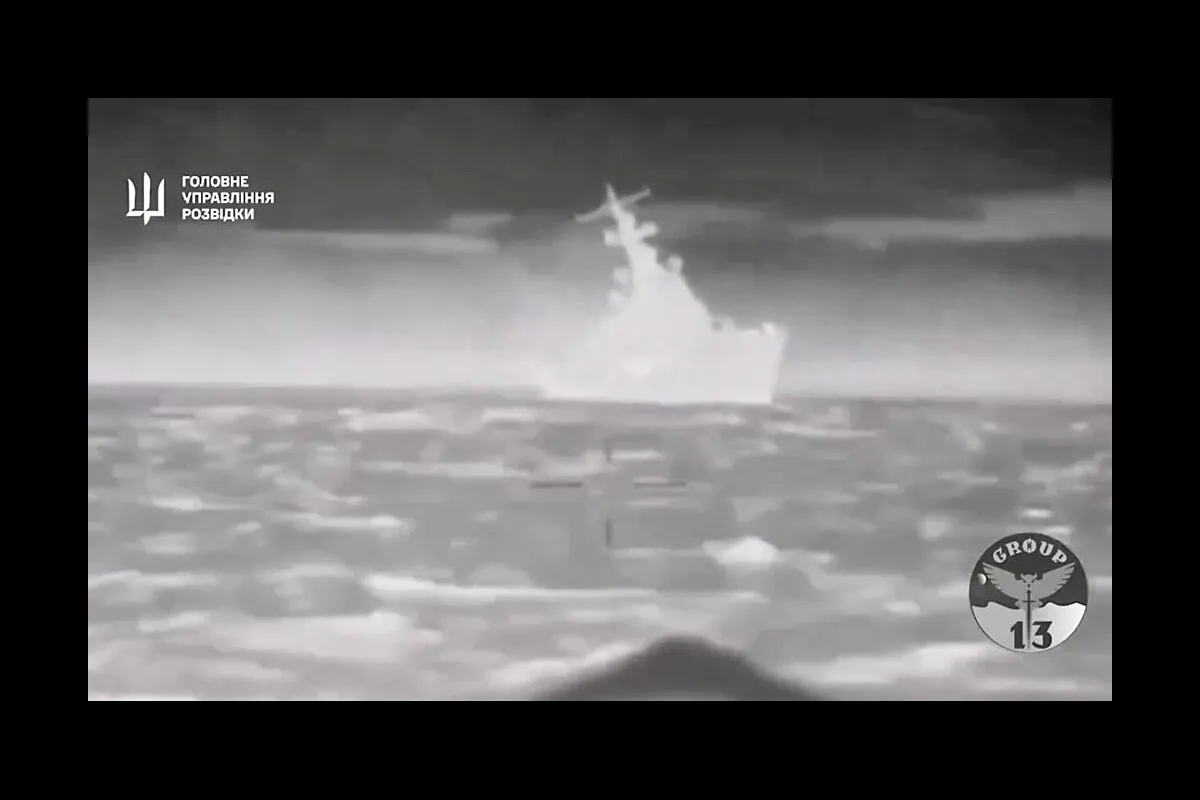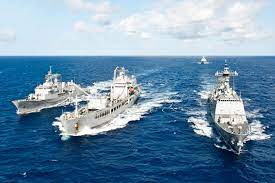Today marks the 75th anniversary of the founding of the North Atlantic Treaty Organization. In honor of the occasion, we’re reprinting this article with permission from the U.S. Naval Institute, originally published in Proceedings Online.
As the North Atlantic Treaty Organization (NATO) marks its 75th anniversary, the alliance and its navies are entering a period of much-needed revitalization. Russia’s 2022 invasion of Ukraine has led to greater NATO cohesion and purpose than at any point since the end of the Cold War. As the allied powers confront a more adversarial Russia for the foreseeable future, the choices NATO navies are making today will shape allied commanders’ options for decades to come. Surveying these choices with the help of the 2023 Proceedings “NATO Navies in Review,” readers can glean five critical areas to watch as the alliance looks ahead to its next 75 years.
Surface Recapitalization
As with the United States, many NATO nations prioritized ground-force optimization for counterinsurgency in the post-9/11 era. Only in the past ten years or so have NATO navies turned to the costly process of recapitalizing and retooling their fleets for high-end war at sea. This will be a decades-long process, but work put in now will pay out in European—and potentially Pacific—waters for decades to come.
Most of NATO’s major navies are now engaged in important surface ship acquisitions. The United Kingdom expects to launch eight antisubmarine warfare frigates by the middle of the next decade, alongside another five general purpose frigates. The Royal Canadian Navy should start receiving a modified version of the British Type 26 frigate in the early 2030s. Spain is set to build five frigates with the U.S.-designed Aegis combat suite. Italy already retains one of the largest surface forces in Europe and will soon receive the final deliveries of its current European multimission frigates (FREMM). France has likewise reached the end of its recent FREMM acquisition cycle but is still early in a production run of smaller frigates. More significantly, France is in the design stage for a follow-on nuclear-powered aircraft carrier.
Air Defense
Many of NATO’s larger navies require better investment in wide-area shipborne air defense capabilities. The proliferation of drones and the ability of nonstate proxies to operate antiship cruise and ballistic missiles means the air domain has only become more contested. In the future, NATO surface combatants must be ready to defend against swarm or saturation attacks in a littoral operating environment, even from terrorist organizations.
Many NATO navies are actively addressing this requirement. Some of this is part of broader fleet recapitalization, such as the collaboration between the Netherlands and Germany on a slate of air-defense frigates aimed for the 2030s. Capability enhancements on existing platforms through upgraded missiles will improve air defenses. The Netherlands, for example, is also set to modernize the surface-to-air missile capabilities of two of its existing frigates. Germany, Denmark, the Netherlands, and Spain have deployed the sophisticated surface-to-air Standard Missile 2 in parts of their fleets. In a world of drones and antiship missiles, the ability of NATO navies to defend against air threats to themselves and others—without having to immediately withdraw to rearm—is an operational imperative.
Antisubmarine Warfare
Russia’s sophisticated submarine fleet poses the most substantial security threat in the European maritime domain. Ongoing NATO investments in antisubmarine warfare (ASW) capabilities should therefore be followed with interest. ASW is a multidomain affair, and wide-area search is most effective from the air. Surface ships are valuable for targeted search and tracking. Submarines are unrivaled for their stealth. Consequently, alliance nations have been making investments across all these domains. France, Germany, Norway, and Greece are investing in land-based maritime patrol aircraft, such as the Poseidon P-8 and/or ASW helicopters. Belgium, the Netherlands, and the U.K. are emphasizing ASW-specialized frigates in their surface recapitalizations. The U.K., Italy, France, Norway, and Spain are undertaking the particularly high-cost burden of reinvesting in attack submarines. In the air, on the surface, and undersea, these ASW investments will be particularly consequential in any NATO maritime standoff with Russia.
Uncrewed Platforms and Mine Warfare
A headline story from both Ukraine’s war at sea against Russia and the Houthi campaign against shipping in the Red Sea is the maturity of battle-ready uncrewed systems (UxS). NATO navies are experimenting with these capabilities at all levels and in all domains. Portugal has taken the lead, hosting the annual exercise Robotic Experimentation and Prototyping Using Maritime Uncrewed Systems, or REP(MUS). The diversity of platforms that NATO navies are testing and purchasing is too extensive to list, but one trend to watch is the role of mother ships to transport, deploy, tender, and possibly control uncrewed platforms. Belgium, the Netherlands, Portugal, and France have all expressed some measure of interest in such vessels.
In the Black and Baltic Seas, uncrewed systems are likely to gain added traction in their support of mine warfare. In Ukraine, Russia’s threatened amphibious landings, its attempted blockade of Ukrainian ports, and Ukraine’s defensive countermeasures all show that mine warfare remains sadly relevant. The Belgian-Dutch-French venture to develop a drone mothership is specifically billed as a mine countermeasure investment. Looking at the sector more broadly, in the second-hand market, Greece and Lithuania are taking possession of mine countermeasure ships from the Netherlands and the U.K., respectively. Poland also is receiving new vessels to locate and destroy mines.
Logistics
Navies are at their most valuable when they can operate on station for an indefinite period. A ship that must frequently return to the pier for food, fuel, and ammunition is not the expeditionary force leaders likely thought they were acquiring. Yet, logistics capabilities are often among the earliest to be cut under cost-saving measures. With that in mind, the latest developments in at-sea sustainment suggest an important pivot in the seriousness with which NATO navies are being resourced. Dollars, euros, and pounds are flowing into the Royal Canadian Navy, Italian Navy, Dutch Navy, and Royal Navy to boost maritime logistics. As more logistics ships become available, derivative benefits may also appear in Pacific operations. Although NATO as an alliance is unlikely to operate in the Pacific for political reasons, several individual NATO navies are important bolsters to international order in the region. Whether operating tens, hundreds, or thousands of miles from home waters, NATO navies’ investments in underway replenishment will enable reach and combat durability that provide leaders with more and better options for deploying combined sea power.



